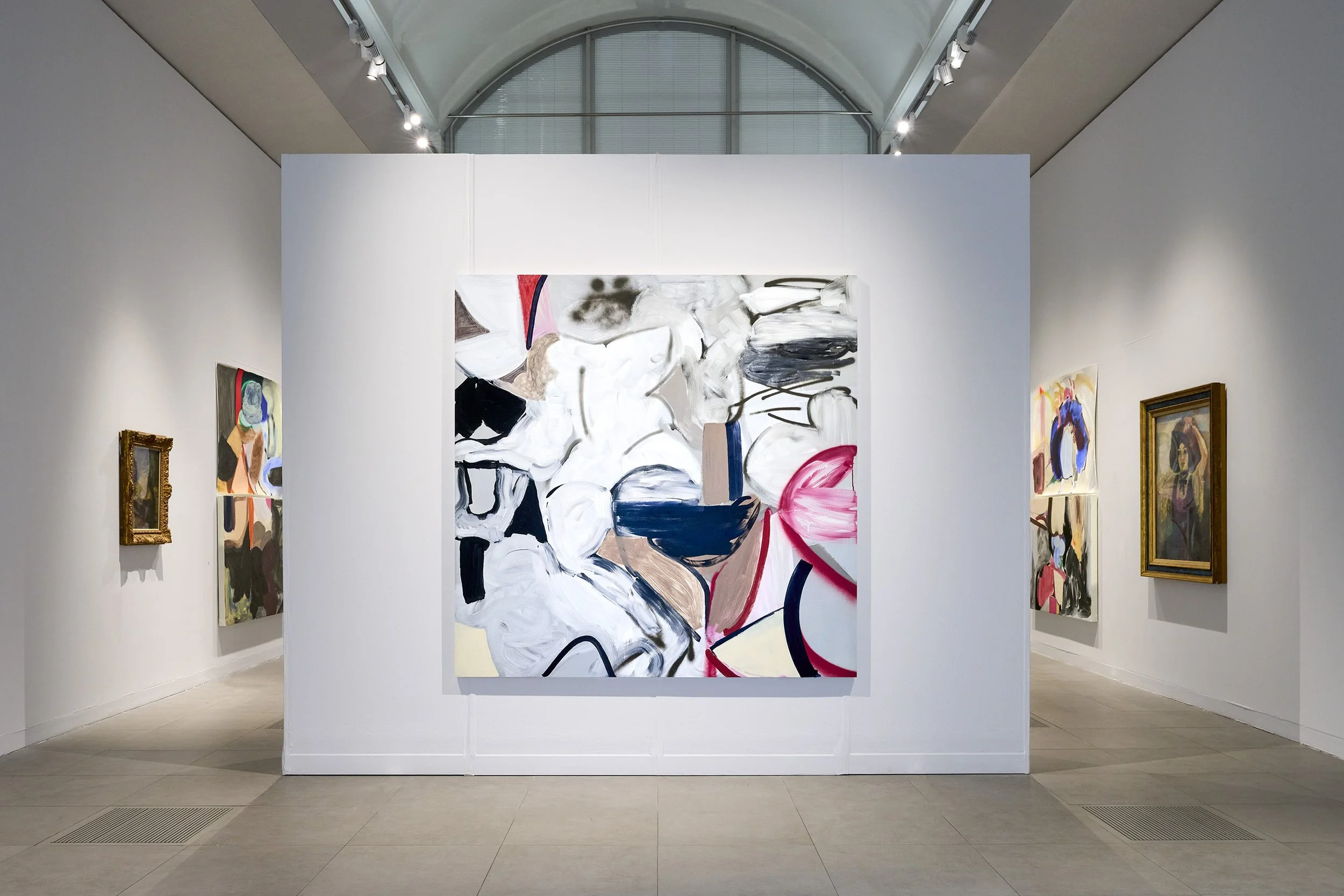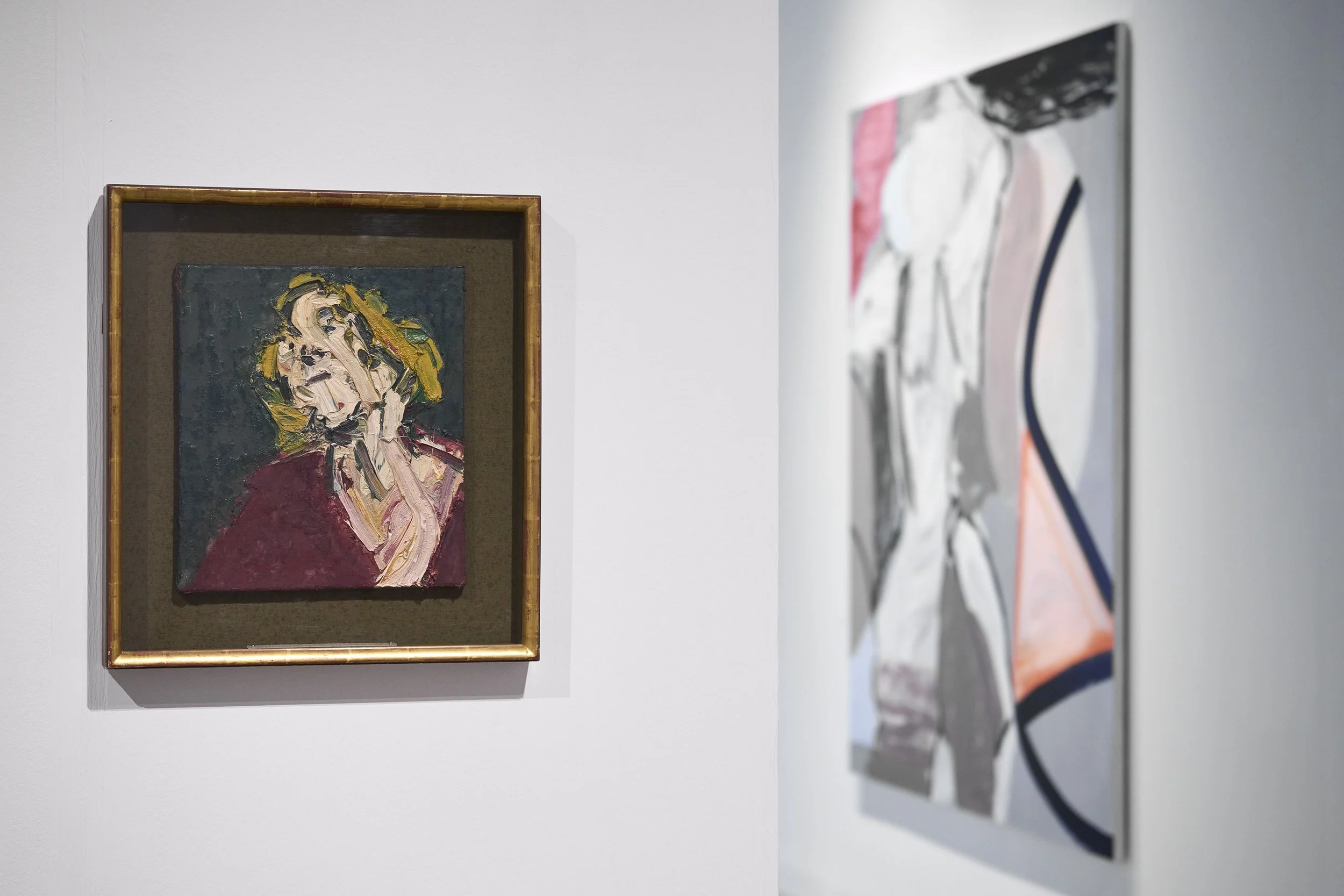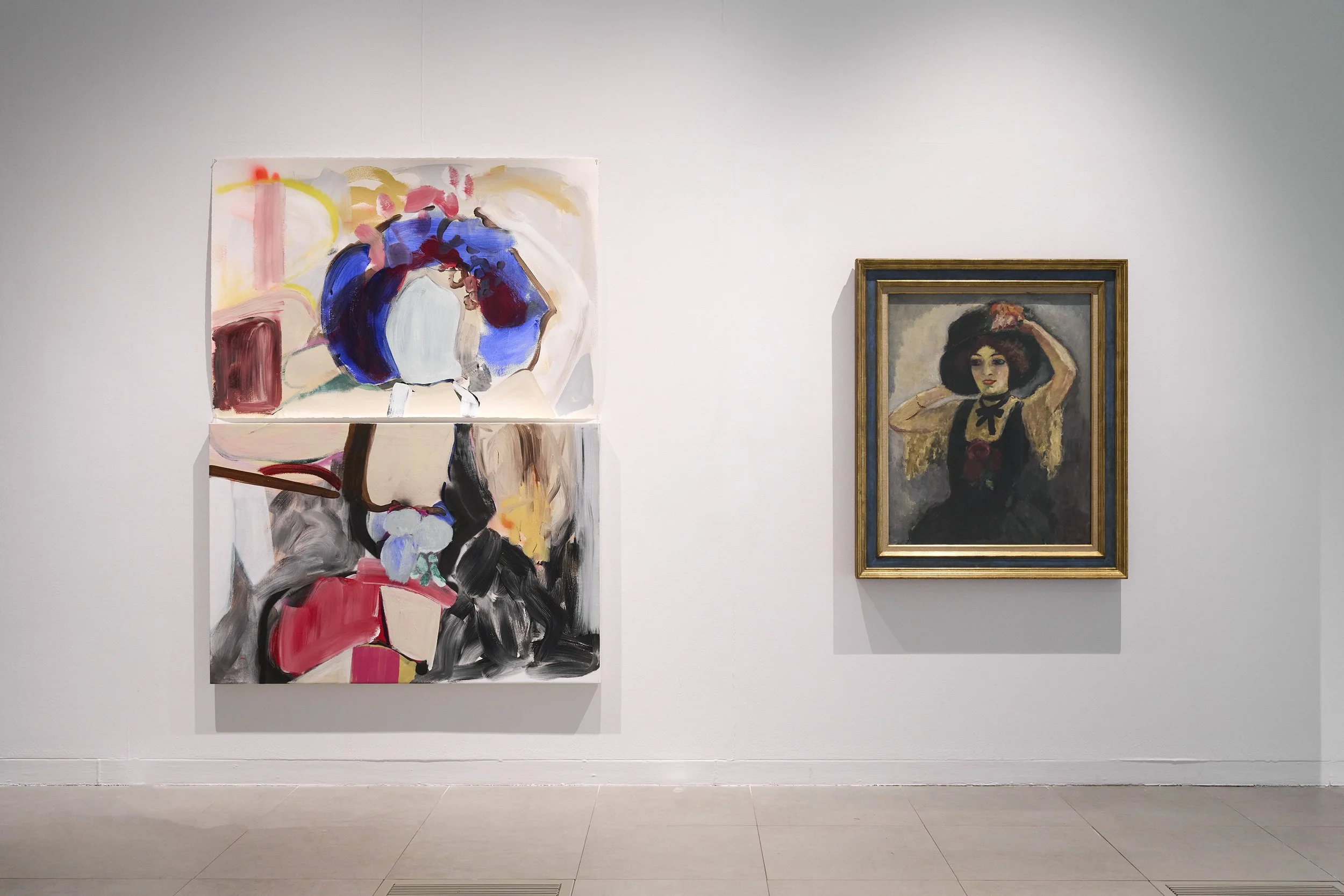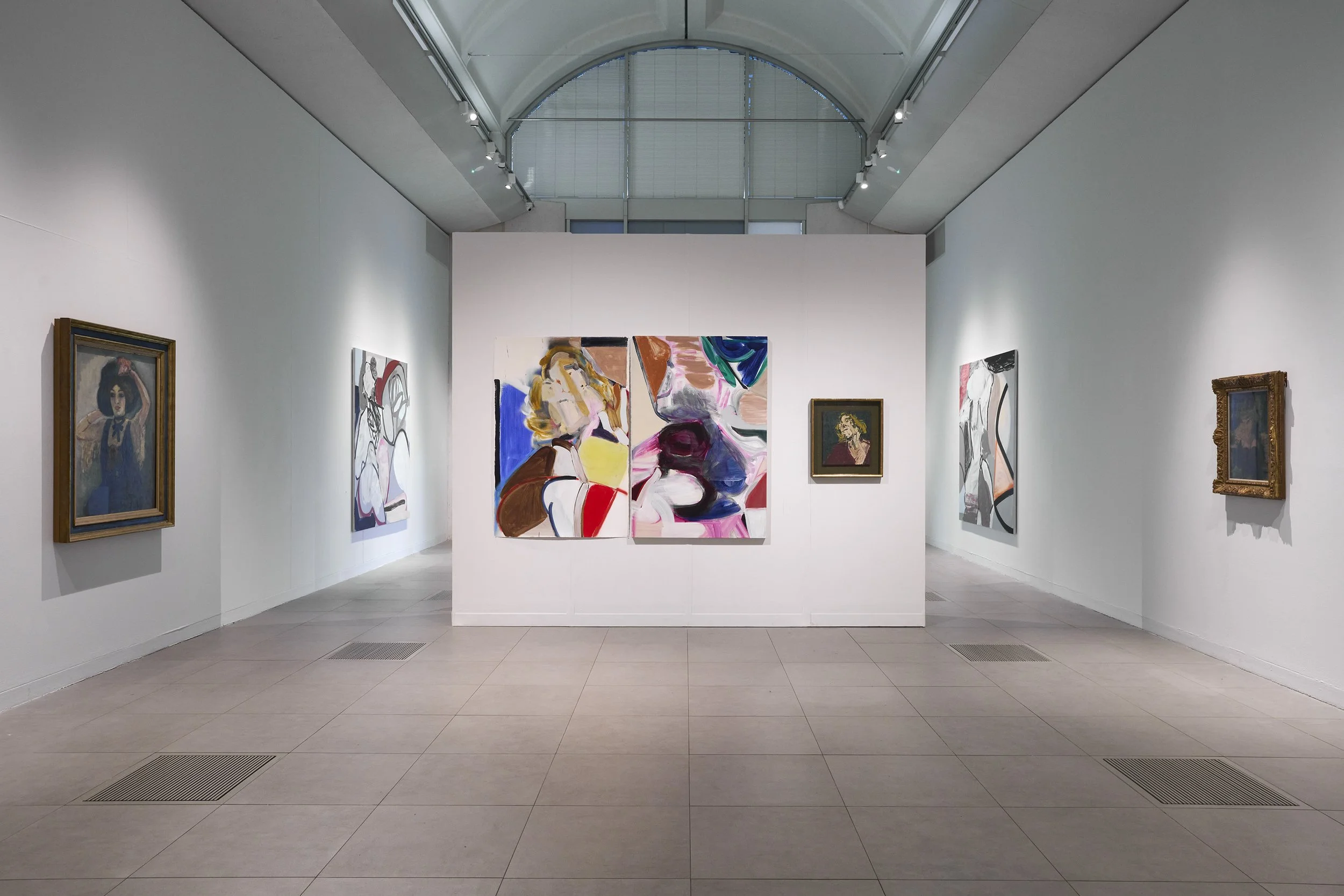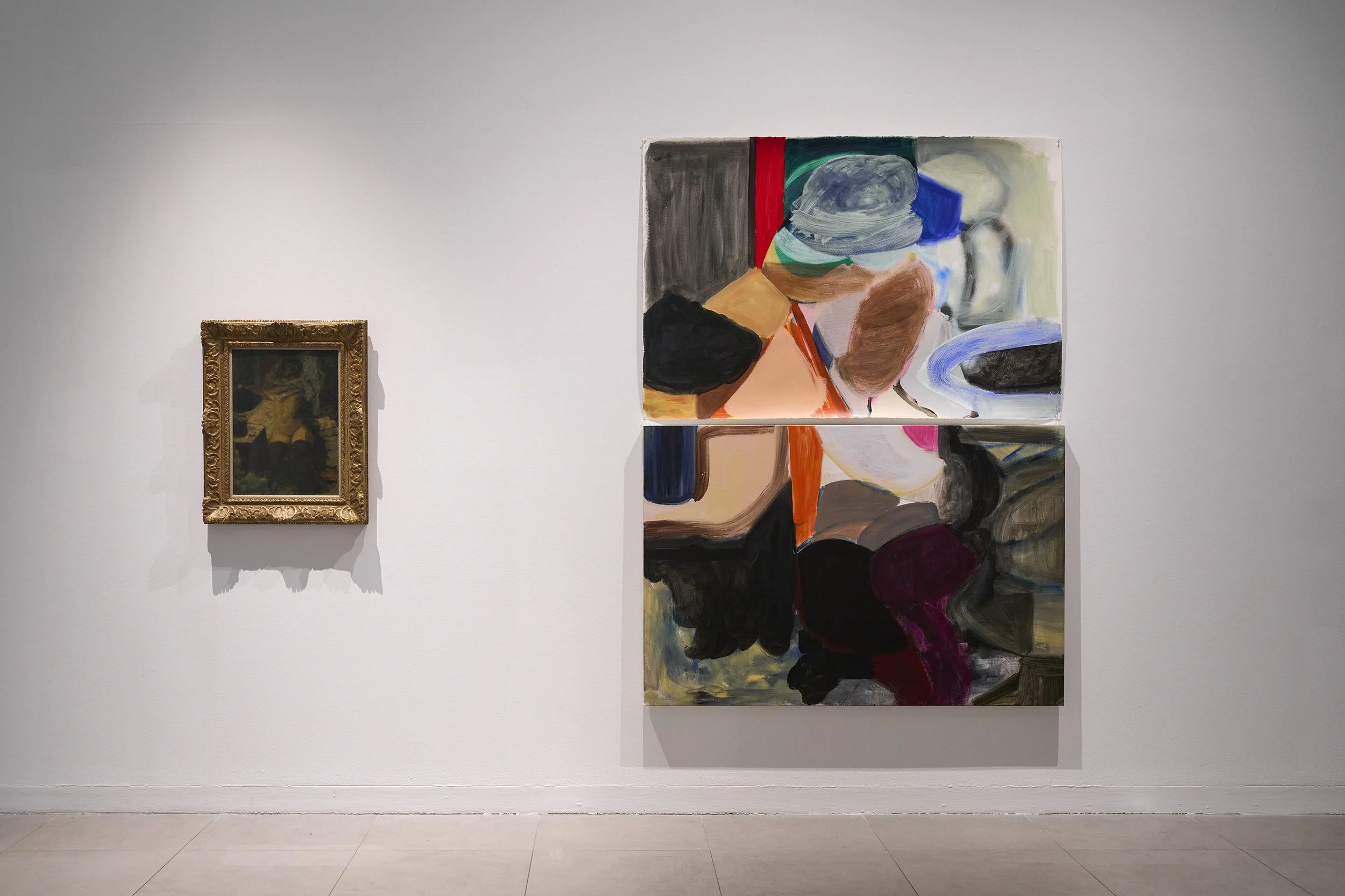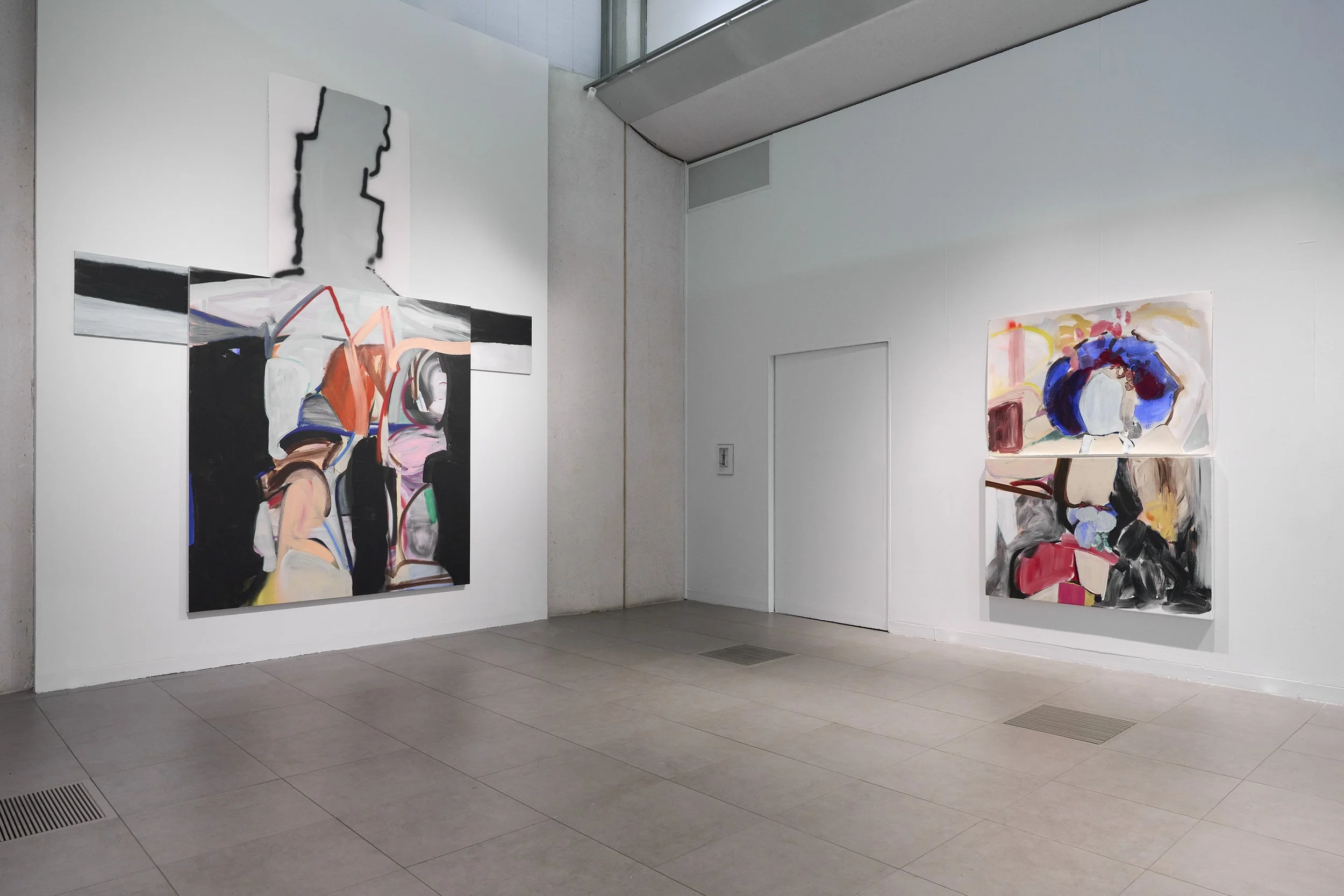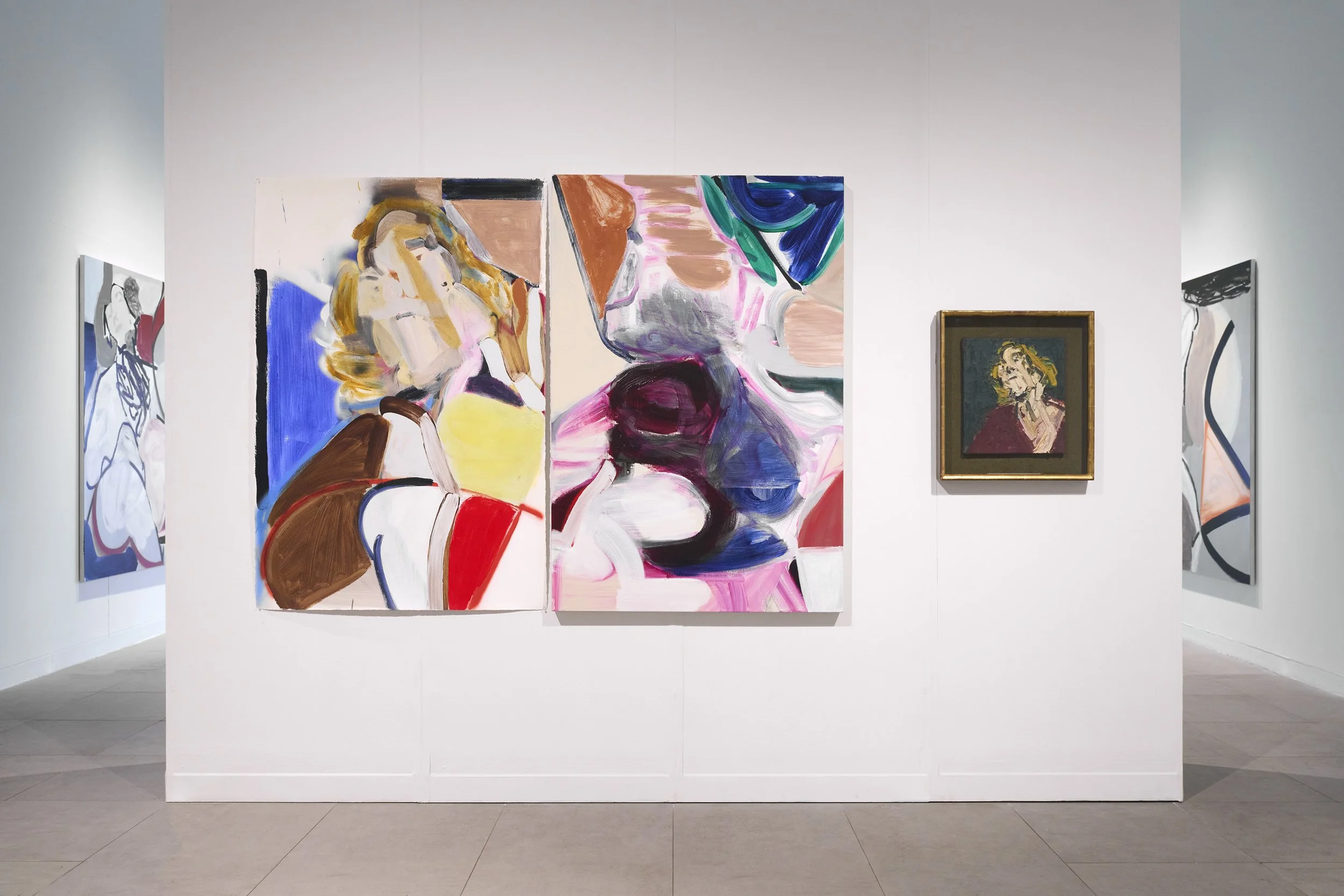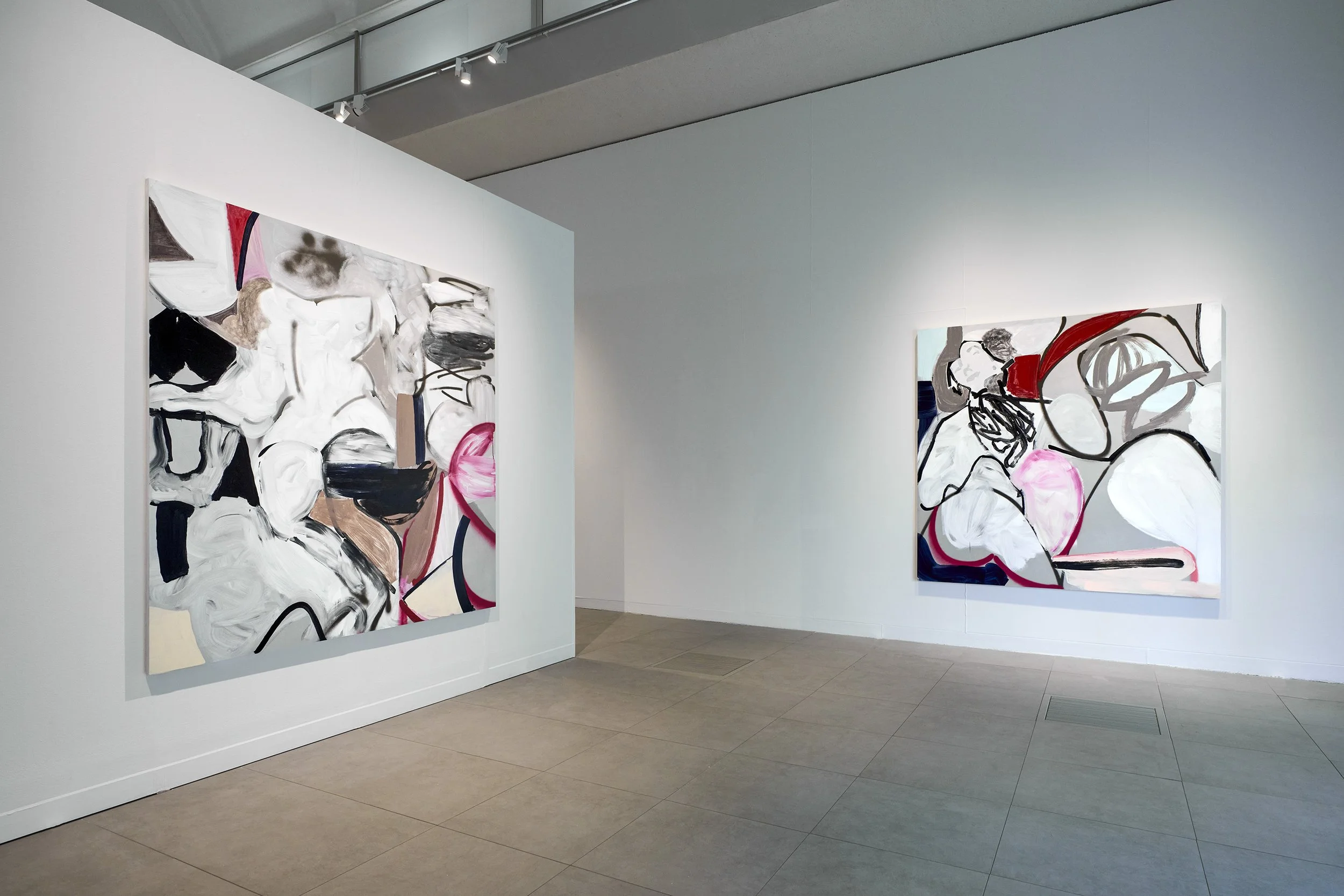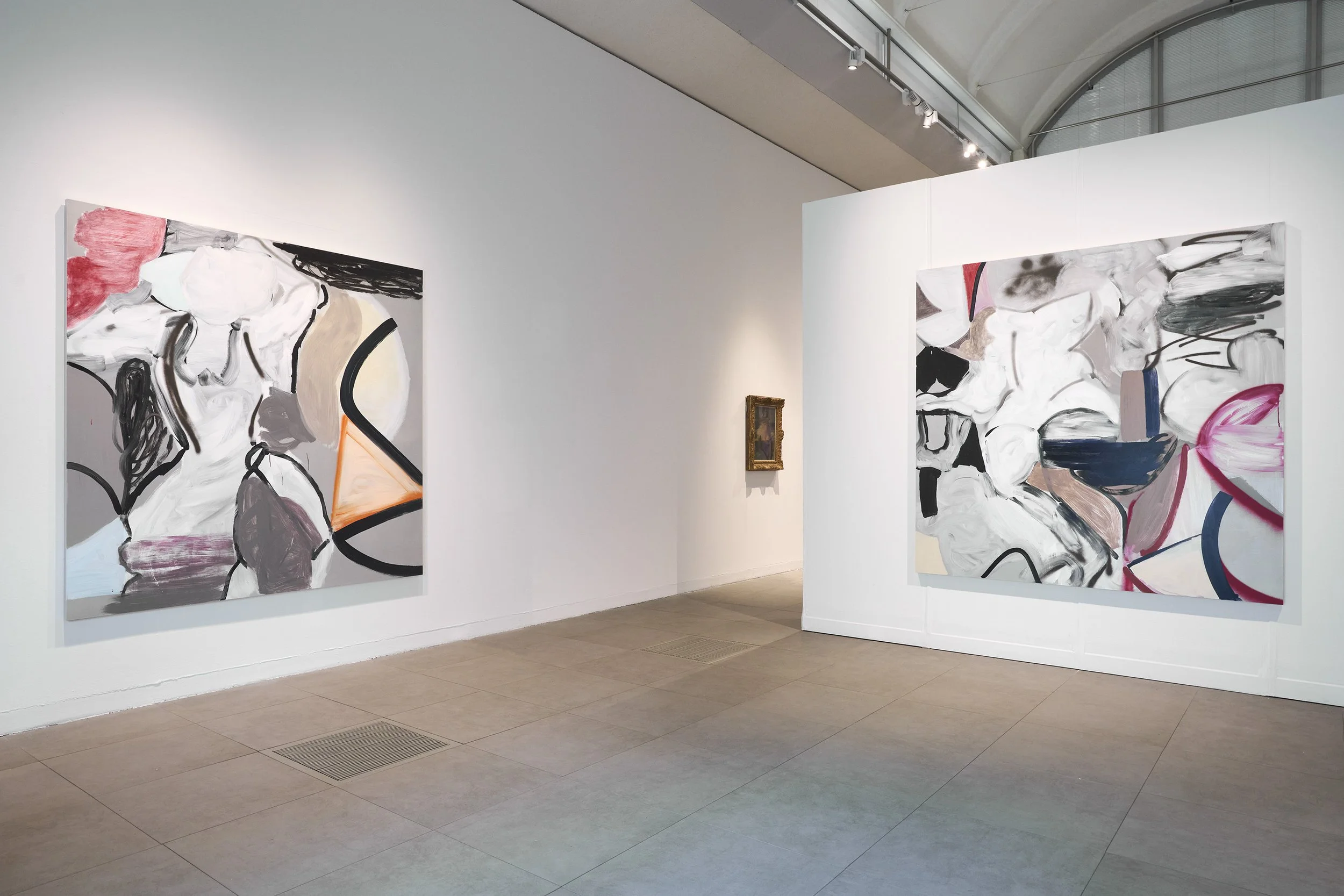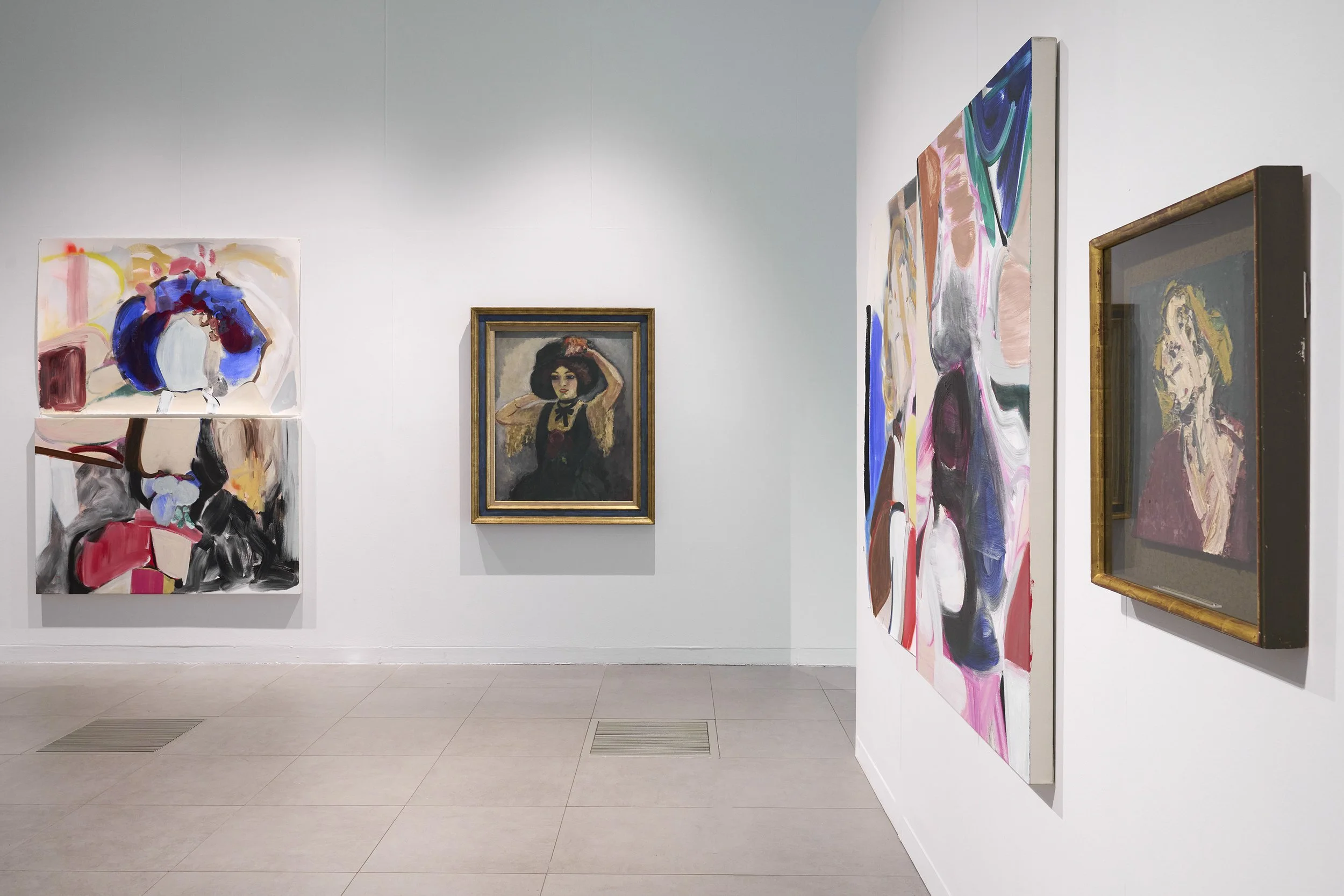
The Psyche of the portrait
Liliane Tomasko meets Bonnard, Van Dongen, Paolozzi, and Auerbach
Millennium Gallery, Sheffield Museums, Sheffield, UK
24 May- 12 October 2025
Photography: Rob Battersby
An abiding interest in the subconscious runs as a thread through the work of Liliane Tomasko – whether interrogating the uncanny of the seeming emptiness of the corner of a room, to the rumpled sheets of a slept-in bed, her dynamic, sweeping brushstrokes converge to erase, transcend, interrogate, or reframe any recognisable origins.
For The Psyche of the Portrait, Tomasko takes a bold new direction, responding to four specific portraits she has chosen that are in, or on loan to, Sheffield’s collection. While a portrait is typically a surface endeavour, Tomasko’s aim is to go deeper, so each of the four portraits, by Frank Auerbach. Pierre Bonnard, Kees Van Dongen and Eduardo Paolozzi, was chosen for what it offers as a doorway to psychological thought.
What emerges in Tomasko’s new paintings, created especially for the exhibition, deftly draws parallels between the creation of those original works and the historical development of psychological study in the 20th century. Together, they question the psychological power dynamics of artist and sitter, query the role of the subconscious in the creative act, and reimagine parables in the context of our 21st-century anxieties.
Frank Auerbach, Head of J.Y.M.,1973: Auerbach’s portrait shows Julia Mill’s head tilted sideways, slightly turned up and back, a pose identified by psychologist Nancy Henley as typically submissive. In her double portrait turned diptych, Tomasko foregrounds this power dynamic between the artist and sitter, playing with primary colors to illustrate the pull of science tugging away at an older incarnation of the world.
Pierre Bonnard, Nu aux bas noires [Nude in Black Stockings],1900: Bonnard created this painting in 1900, a year after Sigmund Freud published The Interpretation of Dreams – a work revered as a key point in the inception of modern-day psychology. Tomasko’s work takes Bonnard’s dream-inspired composition a step further, transforming his recognisable imagery into a floating array of coloured shapes in a swirling cloud of smoke.
Kees van Dongen, Kiki de Montparnasse (1901–1953), c.1909: van Dongen’s arresting portrait of the famous model Kiki is dominated by her large dark alluring eyes. Tomasko’s reworking is featureless, emanating a light blue glow, drawing attention to the stylised ideal of a person that an artist can create and questioning how Kiki’s private internal psychological life is, or is not, revealed.
Eduardo Paolozzi, Icarus, c.1958: Paolozzi’s sculpture can be read as a portrait of the Greek myth figure Icarus, whose wings were scorched as he flew too close to the sun. Tomasko’s responding work, bringing together a juxtaposition of panels in different materials, shows burnt arms, reflecting the perils of unrestrained pride and overconfidence, and offers timely commentary on the overuse and overreach of technology.
Liliane Tomasko said: “Long before it became a science, psychologizing has been a natural tendency of mankind, as a way of making sense of human behaviour, all the way back to the fables and myths of the Greeks and beyond. With portraiture too, artists have through the ages attempted to rationalise the magic that is a person and personality into a two-dimensional likeness. With the great privilege of working with these artworks from Sheffield’s collection, I am seeing how far my own non-rational abstraction can conjure both science and magic into a dialogue for the viewer.”
Alison Morton, Head of Exhibitions at Sheffield Museums: ‘Visitors will recognise these portraits by Auerbach, Bonnard, van Dongen and Paolozzi as some as the most compelling in Sheffield Museums’ care. With these new works she’s created in response, Liliane Tomasko invites the viewer to look even more deeply, and to recognise and reappraise the psychological interplay present in both their creation and the subjects they depict.’

